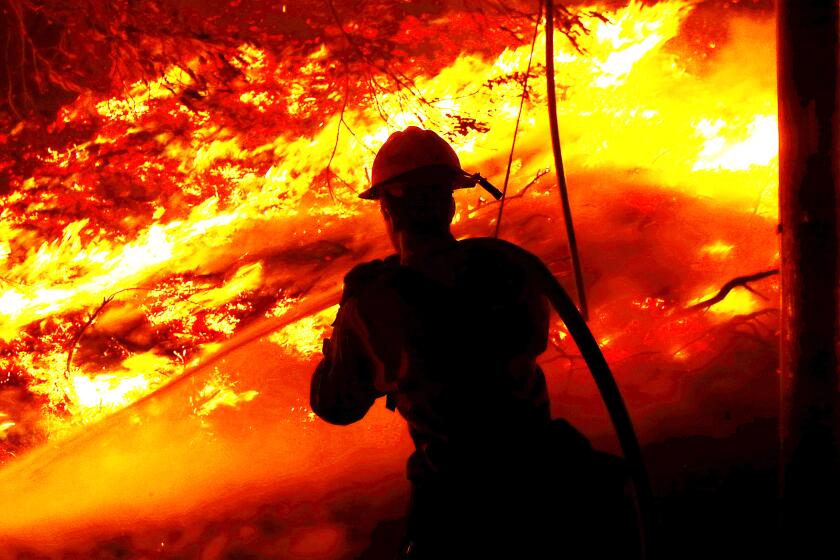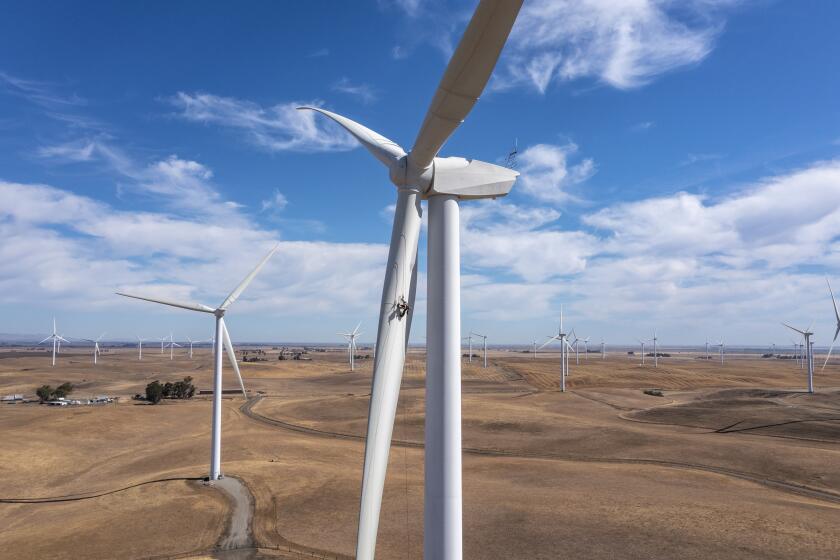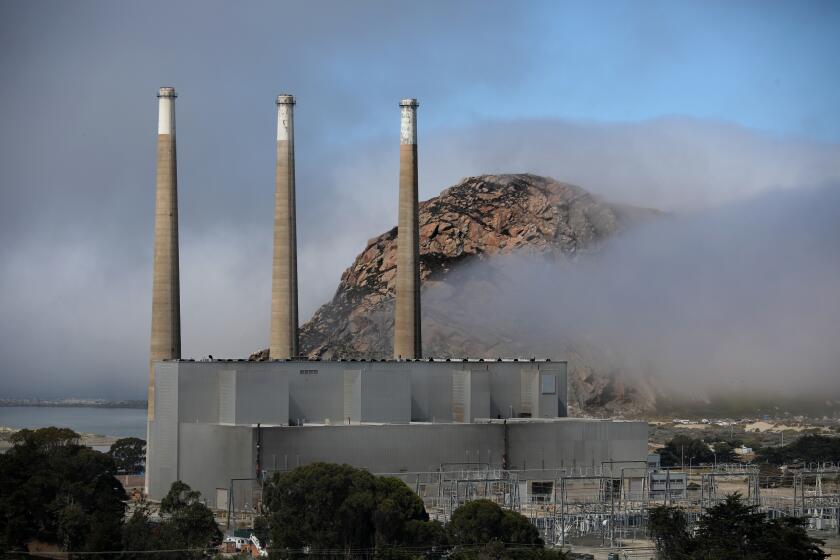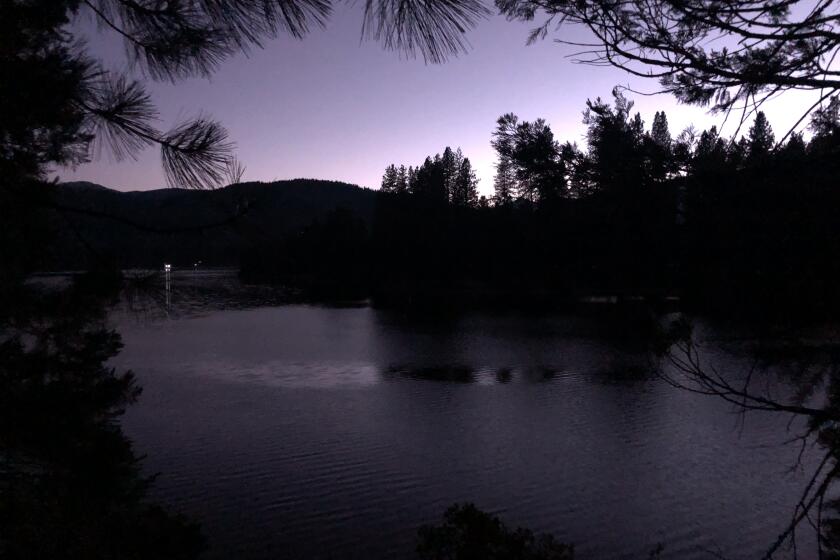California could lend PG&E $1.4 billion to save Diablo Canyon nuclear plant
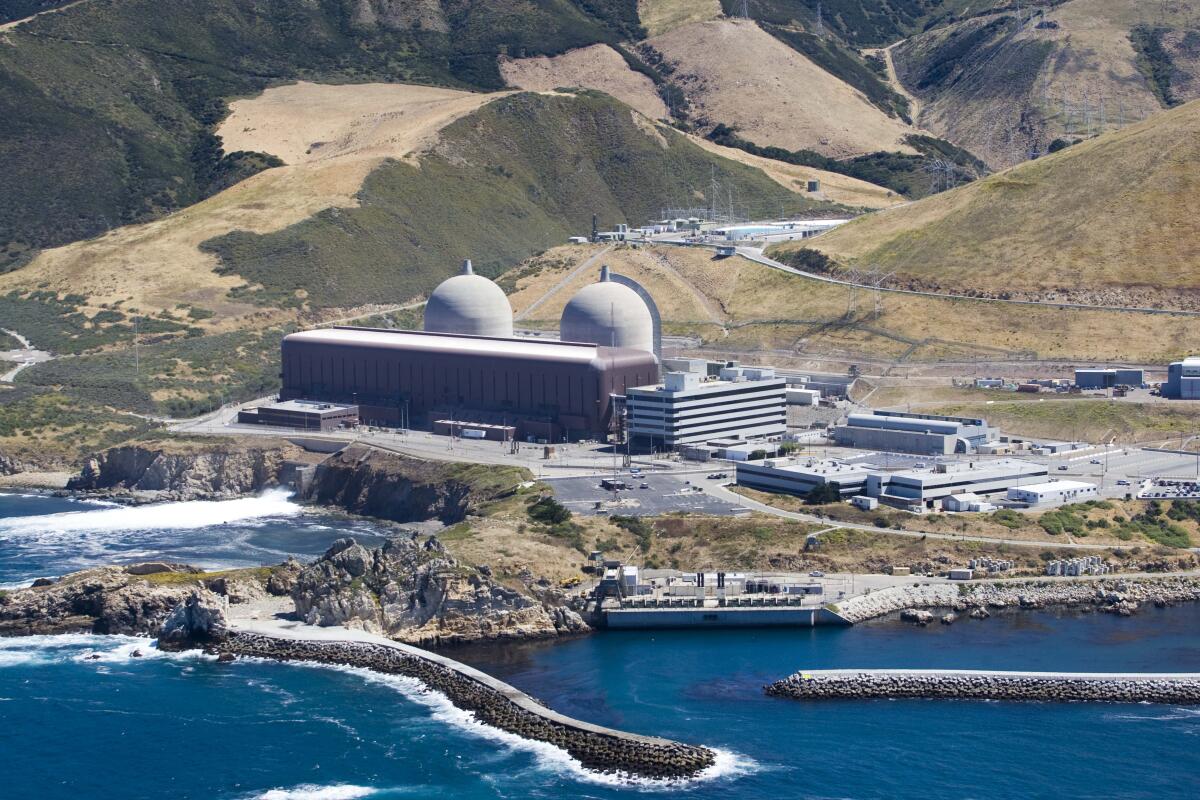
- Share via
A last-minute proposal from Gov. Gavin Newsom could keep the Diablo Canyon nuclear plant open through 2035, a decade beyond its current closure date — in part by giving owner Pacific Gas & Electric Co. a $1.4-billion forgivable loan.
The proposal is part of draft legislative language distributed to state lawmakers late Thursday night. The bill, which has yet to be introduced in the Legislature, would also exempt the Diablo Canyon extension from the California Environmental Quality Act and several other environmental rules that nuclear opponents might otherwise use to challenge the extension.
Diablo Canyon is California’s single largest power source. Officials are worried that without it, the state could have trouble keeping the lights on — and air conditioners running — during intense summer heat waves. Newsom has also suggested that keeping the plant open would help fight climate change because Diablo doesn’t produce planet-warming pollution.
“Some would say it’s the righteous and right climate decision,” Newsom told The Times earlier this year.
The 2,250-megawatt power plant — which generated 6% of the state’s electricity in 2021 — is nestled along the Central Coast south of Morro Bay. Its fate has been a subject of controversy for decades, with then-Gov. Jerry Brown railing against the facility’s construction in the late 1970s amid a wave of anti-nuclear activism spurred by the Three Mile Island partial meltdown.
Our oceans. Our public lands. Our future.
Get Boiling Point, our new newsletter exploring climate change and the environment, and become part of the conversation — and the solution.
You may occasionally receive promotional content from the Los Angeles Times.
It’s been six years since PG&E struck a deal to close Diablo by 2025, succumbing to public concerns that the plant — which sits near several seismic fault lines — could spread deadly radiation during an earthquake. The U.S. also has no long-term storage repository for spent fuel, meaning radioactive waste is piling up at nuclear plants across the country, including Diablo.
But since PG&E agreed to exit the atomic energy business, the growing urgency of the climate crisis — which has led to worsening wildfires, heat waves, storms and droughts — has led some environmentalists to reconsider nuclear-plant closures.
It’s an especially pressing question in California, which has had trouble supplying enough power to keep the lights on during hot summer evenings after the sun goes down, when solar panels stop generating. Parts of the state suffered brief rolling blackouts over two nights in August 2020. There have been several close calls since then.
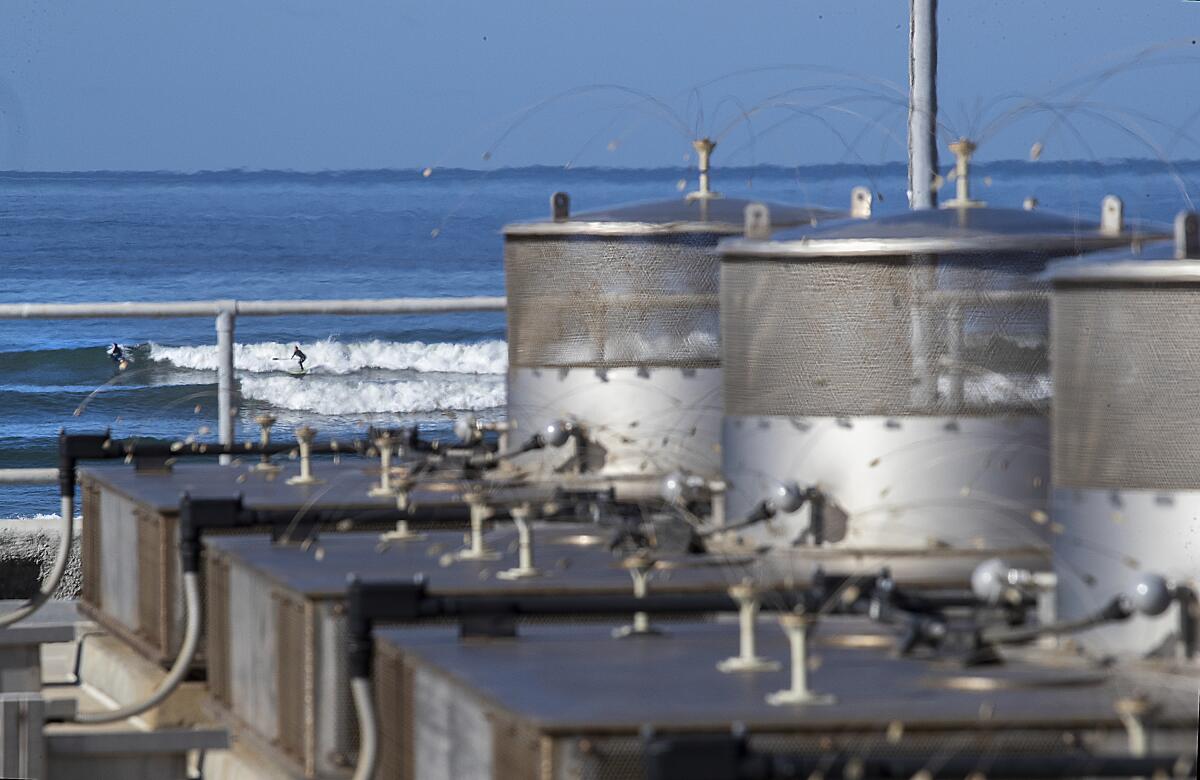
When the Biden administration announced earlier this year that it would give out $6 billion in federal funds to help rescue nuclear plants facing closure, Newsom said California would be “remiss not to put that on the table as an option.”
But it’s not yet clear whether PG&E will be eligible for the federal funds — hence the draft bill circulated by Newsom’s office.
If the Legislature signs off, the state’s Department of Water Resources would be authorized to lend PG&E $1.4 billion. The money could help pay for the federal license renewal process, and for maintenance needed to keep Diablo operating safely.
The utility company would have to repay portions of the loan it doesn’t end up needing. If federal funding for Diablo ultimately came through, California taxpayers could get all or part of their money back.
“We’re optimistic that there may be some federal assistance involved in this,” Newsom spokesperson Anthony York said.
Newsom told The Times earlier this year that for PG&E, changing course on Diablo Canyon was “not their happy place.” But the beleaguered company — which emerged from bankruptcy two years ago after one of its power lines sparked the deadliest fire in state history — has had little choice but to go along with the governor’s new direction on nuclear power.
“Only about 10% of wildfire ignitions are caused by utility equipment. And we’re going to end that,” Patti Poppe says.
Asked about the draft bill, PG&E spokesperson Lynsey Paulo said in an email that the monopoly utility “is committed to California’s clean energy future, and as a regulated utility, we are required to follow the energy policies of the state.”
“We understand state leaders’ discussions to potentially extend operations at [Diablo Canyon] are progressing,” Paulo said. “We are proud of the role that [Diablo Canyon] plays in our state, and we stand ready to support should there be a change in state policy, to help ensure grid reliability for our customers and all Californians at the lowest possible cost.”
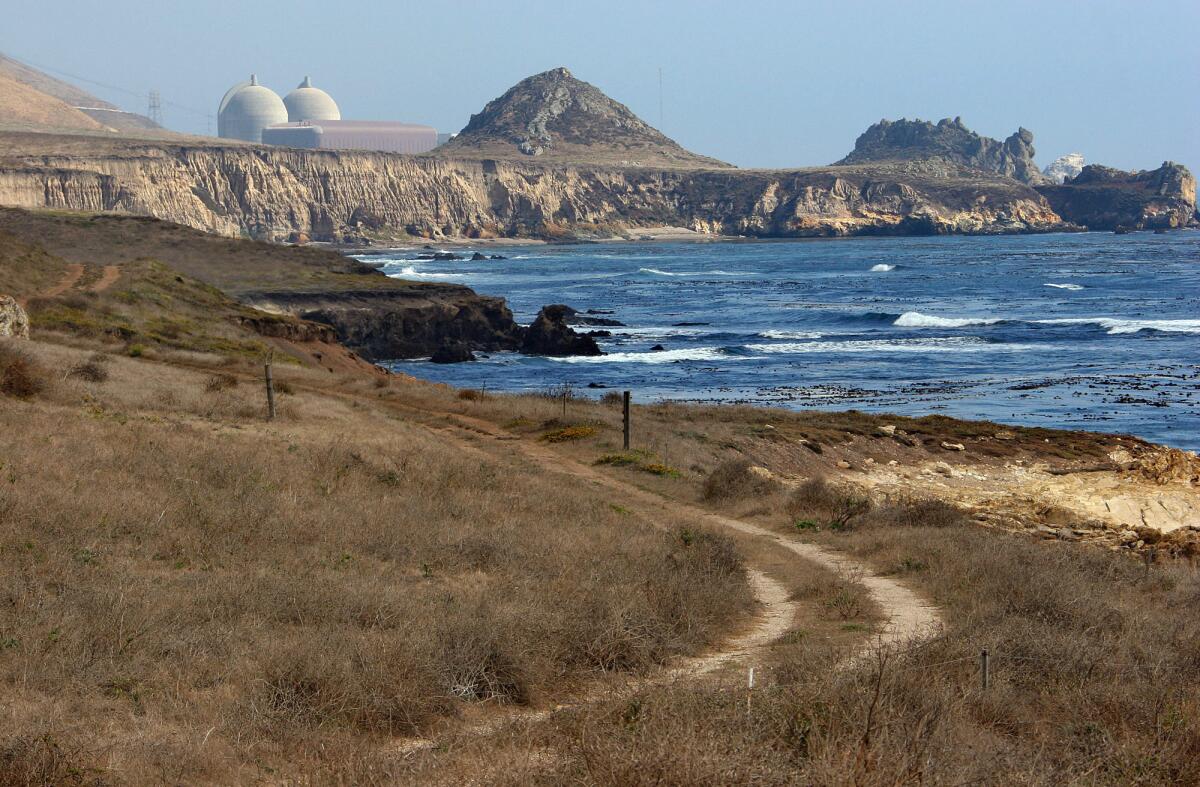
Under the draft bill, PG&E would be allowed to keep operating Diablo Canyon through 2035 — but negotiations with lawmakers are just getting underway, and Newsom’s proposal is subject to change. Another document circulated by the governor’s office discusses an initial five-year extension through 2030, with an additional five years tacked on only if necessary.
“The final details are being worked out,” York said.
The draft bill also says any state action needed to keep Diablo open would be exempt from the California Environmental Quality Act, better known as CEQA. That means agencies reviewing the extension — possibly including the Coastal Commission, the Public Utilities Commission and the State Lands Commission — wouldn’t need to do extensive study of the environmental impacts.
The draft bill justifies that exemption by stating that continued operation of the nuclear reactors “would entail no material operational or physical changes and no new or materially different adverse environmental impacts.”
“Accordingly, the Legislature finds that continued operations is consistent with the state’s environmental priorities, will not substantially interfere with public trust needs and resources, is otherwise consistent with the public trust doctrine, the Coastal Act, and the California coastal zone management program, and is in the best interests of the state,” the draft bill says.
Local opposition to solar and wind farms could be a huge barrier to clean energy.
At the same time, the bill would allow PG&E to continue with at least one “adverse environmental impact.”
Diablo Canyon currently can’t operate past 2025 in part because of a state regulation ordering coastal power plants to stop sucking up huge amounts of ocean water to cool their generators — a process that kills fish and other marine life. Shutting down the plant was PG&E’s solution for complying with that rule, rather than spending billions of dollars upgrading its equipment.
The draft bill would give PG&E a reprieve, setting a new compliance deadline of Oct. 31, 2035. It would also require the company to pay an environmental “mitigation fee” of $10 per million gallons of ocean water used, starting in 2024 — about $8 million annually, with a 3% increase to the fee each year. That’s much more than the company currently pays.
“While an improvement, we would prefer to see the marine life not lost in the first place. And certainly we would prefer the impacts to go away all together,” Sean Bothwell, executive director of the California Coastkeeper Alliance, said in a text message.
In coastal Morro Bay, Calif., three iconic but defunct smokestacks are coming down. A lithium battery storage project is planned as state transitions to renewable energy.
There’s not much time to introduce a bill and get it passed before the legislative session ends Aug. 31. And Newsom’s proposal is already facing opposition from environmental groups including the Sierra Club, Natural Resources Defense Council and California Coastal Protection Network. They say the state should be focused on replacing nuclear power with cleaner options.
Dan Jacobson, senior advisor to advocacy group Environment California, said the $1.4 billion PG&E could receive under the draft bill would be “better spent on renewables, conservation and efficiency.” He worries Diablo will become a “money pit,” where “you start to put money in, and all of a sudden PG&E... is going to say they need more.”
“The $1.4 billion turns into $2 billion, turns into $6 billion, turns into $10 billion,” he said.
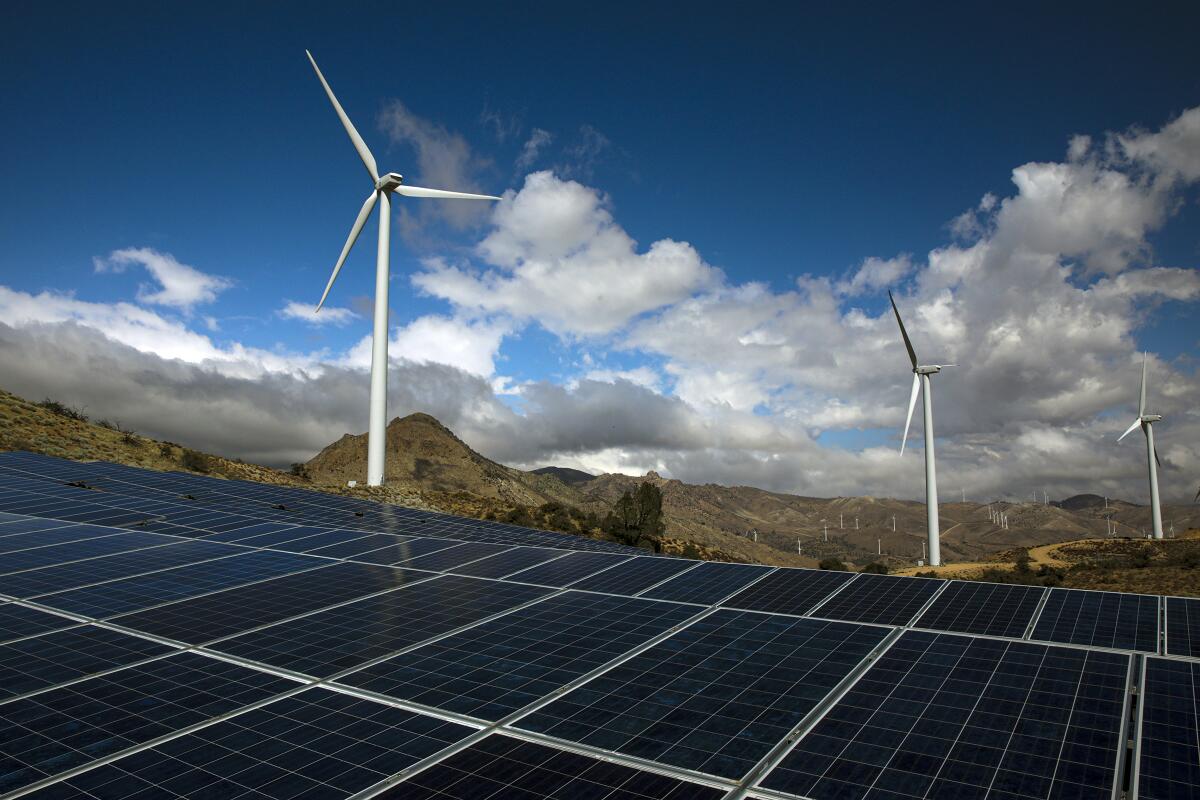
Unlike solar and wind farms, nuclear reactors can produce electricity around the clock — crucial for California and other parts of the country that increasingly face the threat of power shortages, especially on hot evenings during August and September.
The stunning growth of lithium-ion battery storage has made it easier and cheaper to bank solar and wind power for times of day when the electric grid is stressed. But there are still relatively few battery systems on the grid. And worsening heat waves — driven by climate pollution — are driving up demand for air conditioning, which uses large amounts of electricity.
State officials are worried there could be rolling blackouts this summer, even in advance of Diablo’s planned closure.
“The grid is vulnerable right now,” said Neil Millar, a vice president at the California Independent System Operator.
Wildfires. Heat. Drought. Possible power shortages. The next month could be a tough one.
That vulnerability is driven in part by the retirement of gas-fired power plants — a major source of climate pollution, but also a key tool for keeping the lights on when the sun goes down. At Newsom’s urging, state lawmakers passed a bill in June that critics say could help several gas plants along the Southern California coast stay open past their planned 2023 closure dates.
Several lawmakers who voted for that bill — including state Sen. Henry Stern (D-Malibu), an ardent climate advocate — said continued reliance on fossil fuels is an unfortunate necessity while California develops cleaner alternatives for keeping the lights on 24/7.
In addition to batteries, those alternatives might include geothermal power, offshore wind and long-duration storage. California could also pay homes to use less energy and coordinate electricity supplies more closely with other states.
“We’re trying to get ahead of a crisis,” Stern said in June. “If we don’t manage this crisis, utilities around the state of California will do whatever they have to do. And in the past, that has meant firing up dirty [gas] plants in disadvantaged communities.”
Support our journalism
Your support helps us deliver the news that matters most. Subscribe to the Los Angeles Times.
It’s yet to be seen if the Legislature will be similarly amenable to Newsom’s plans for Diablo Canyon.
The California Energy Commission will hold a workshop Friday evening to discuss the potential nuclear-plant extension and take public comment. Information on how to join the workshop by Zoom or phone is posted on the commission website.
More to Read
Inside the business of entertainment
The Wide Shot brings you news, analysis and insights on everything from streaming wars to production — and what it all means for the future.
You may occasionally receive promotional content from the Los Angeles Times.
